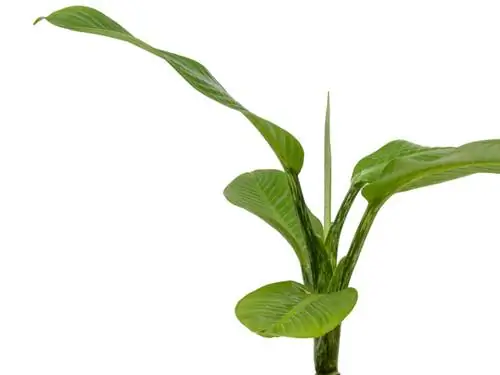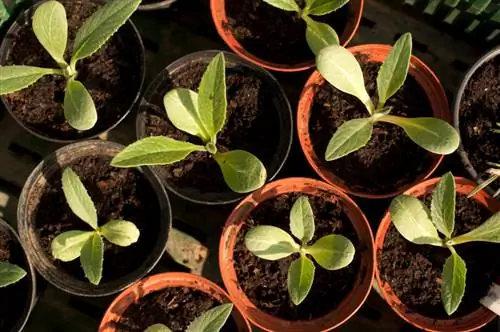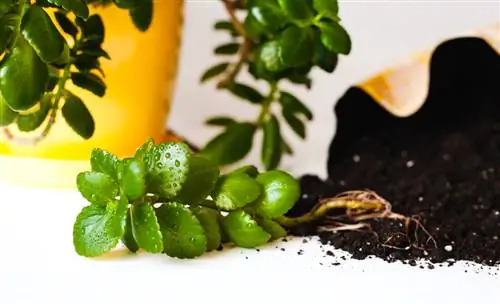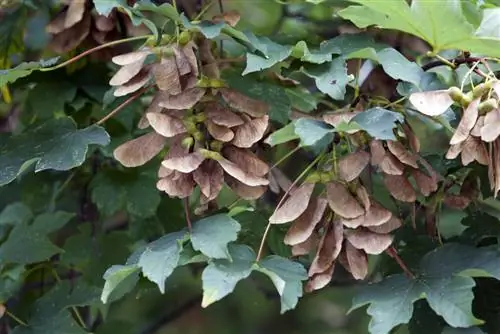- Author admin [email protected].
- Public 2023-12-16 16:46.
- Last modified 2025-01-23 11:21.
The Dieffenbachia is one of the most uncomplicated house plants that generously forgives occasional care mistakes. Propagating cuttings using offshoots is very easy with this leafy plant and can be easily achieved even by people without the proverbial green thumb.
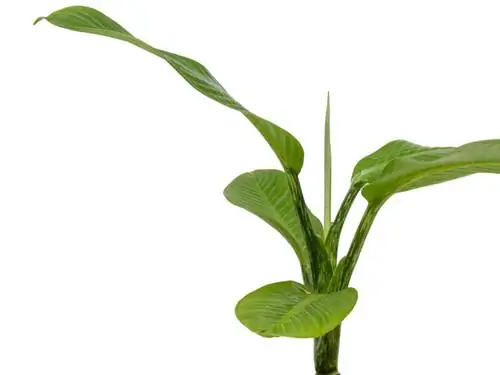
How can you propagate Dieffenbachia offshoots?
To propagate Dieffenbachia offshoots, cut head or shoot cuttings and root them either in a glass of water or directly in moist substrate, covered with a clear plastic bag. Success is shown when a new leaf is sprouted.
The right time
In principle, you can take cuttings all year round. However, these form roots more quickly when the Dieffenbachia is in the growth phase. So it's best to cut seedlings in spring or summer.
Cutting offshoots
There are two types of offshoots that root well on Dieffenbachia. These are:
- Head cuttings: Cut off the ten to fifteen centimeter long tip of a shoot with a sharp knife.
- Shoot cuttings: The Dieffenbachia forms small side shoots (Kindel), which can be cultivated separately from the mother plant.
Rooting in a water glass
Place the cuttings in a small vase in which you fill about 1.5 to 2 centimeters of water. The liquid must under no circumstances cover the eyes, which can be recognized by the slight thickening of the trunk, because this is where the plant will later grow leaves.
Put a transparent bag over the container and place it in a bright, sunny place. Ventilate daily and add some water if necessary.
Insertion in soil
Within a few weeks, roots around ten centimeters long have formed on the offshoots. Now plant the offspring in soil and continue to care for the small Dieffenbachia like the mother plant.
Place cuttings directly into substrate
This method also works well:
- Fill small pots with special growing or potting soil.
- Wet the substrate well and insert cuttings.
- Here, too, care must be taken to ensure that at least one eye is not covered with soil.
- Cover with a translucent plastic bag.
- Air daily to prevent mold formation.
- Keep evenly moist, but do not overwater, otherwise there is a risk of rot.
When the first new leaf appears, you know that your efforts have been successful. Now you can remove the bag and continue to care for the small plants as usual.
Tip
If the freshly cut cutting has a lot of leaf mass, it is recommended to separate the lower leaves. This means that the offshoot does not have to absorb as much water and roots much more quickly.

